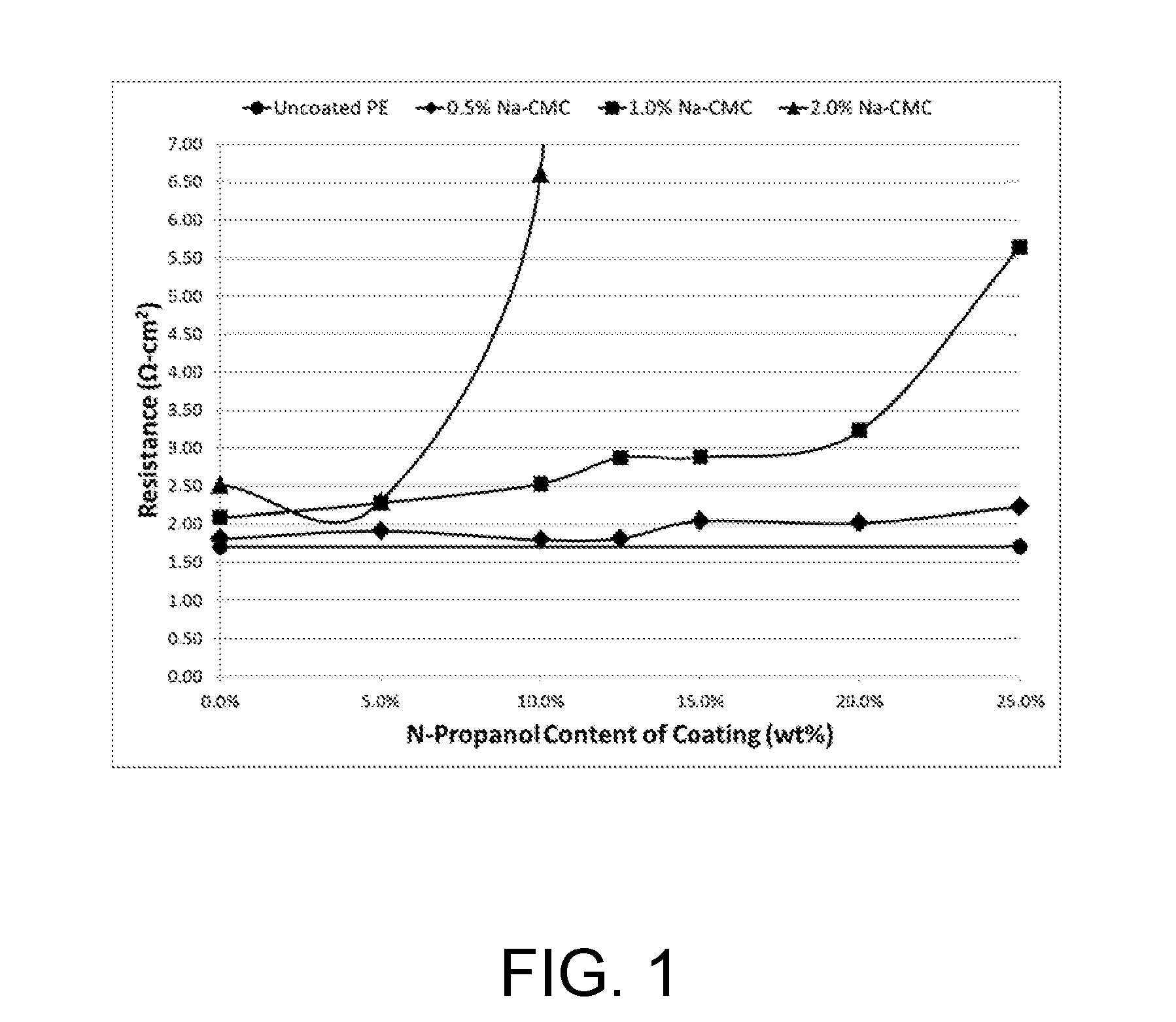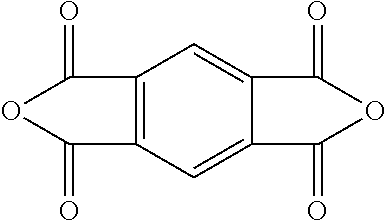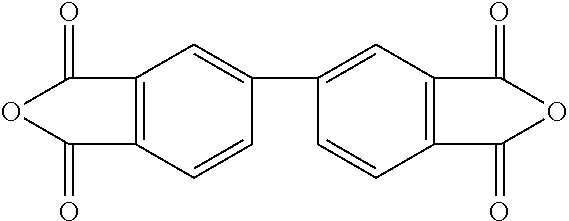Separator having adhesive layer, manufacturing method of the same, and electrochemical device having the same
- Summary
- Abstract
- Description
- Claims
- Application Information
AI Technical Summary
Benefits of technology
Problems solved by technology
Method used
Image
Examples
examples
[0070]Test Methods
Thickness
[0071]Thickness of the polyimide nonwoven material and the polyolefin microporous membrane is measured by test method D of ASTM D5947-11, hereby incorporated in its entirety by reference. The test apparatus (type D) used in the present examples was a Hanatek FT3 precision thickness gauge (Hanatek Instruments, East Sussex, UK) with a foot diameter of 16 mm and a pressure of 50 kPa. The measurements were done using one layer of nonwoven sheet, one layer of microporous membrane or one piece of the multilayer article of the present invention with 10 individual, equally spaced readings being taken in the cross direction. The thickness of the sample was reported as the average of the 10 individual readings.
Ionic Resistance
[0072]Ionic Resistance is a measure of a separator's resistance to the flow of ions, and is measured using an AC impedance technique comparable to that described in SAE J2983. Samples were cut into four small pieces (3.175 cm diameter) and soak...
PUM
| Property | Measurement | Unit |
|---|---|---|
| Length | aaaaa | aaaaa |
| Fraction | aaaaa | aaaaa |
| Fraction | aaaaa | aaaaa |
Abstract
Description
Claims
Application Information
 Login to View More
Login to View More - R&D
- Intellectual Property
- Life Sciences
- Materials
- Tech Scout
- Unparalleled Data Quality
- Higher Quality Content
- 60% Fewer Hallucinations
Browse by: Latest US Patents, China's latest patents, Technical Efficacy Thesaurus, Application Domain, Technology Topic, Popular Technical Reports.
© 2025 PatSnap. All rights reserved.Legal|Privacy policy|Modern Slavery Act Transparency Statement|Sitemap|About US| Contact US: help@patsnap.com



